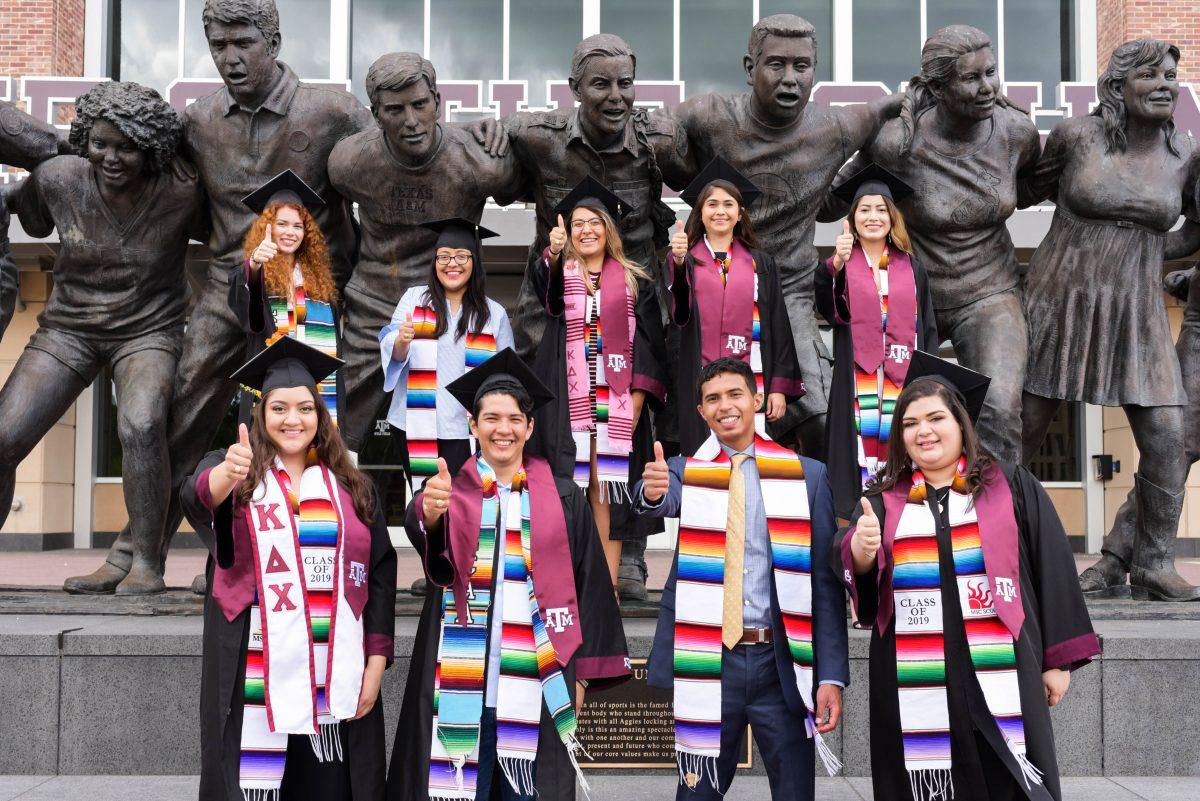After years of hosting a growing Hispanic population, Texas A&M has received recognition as a Hispanic-Serving Institution, or HSI.
The Hispanic Association of Colleges & Universities, or HACU, officially recognized A&M on Nov. 30 as an HSI. Currently representing almost 600 institutions, the HACU defines an HSI as “colleges, universities or systems/districts where total Hispanic enrollment constitutes a minimum of 25% of the total enrollment,” according to the HACU’s bylaws posted on its official website.
The distinction has served to show the growth of a more diverse student body. Although the designation does not yet confer federal benefits, several Hispanic and Latinx student leaders and former students, including Hispanic Presidents’ Council President and international studies senior Alexia Hernandez, said it is a step in the right direction for both students in Aggieland and Hispanic people at large in Texas.
“I am incredibly overjoyed, and it’s definitely a long time coming,” Hernandez said in an email to The Battalion. “Hispanic populations in Texas have proven to be a major influence in Texan history, culture, economy and the community — now we are making our mark as scholars and educated members of society, emerging from the best university in Texas.”
The designation shows the Hispanic community is one of the fastest-growing minority populations to pursue higher education, Hernandez said.
“Many of us are first-generation college students, and a college degree can change the entire trajectory of a family’s career aspirations and financial success for years to come,” Hernandez said. “With a degree from Texas A&M University, we have the power to change the world, uplift our communities and build generational wealth.”
The HSI recognition by the HACU is a step toward Title V federal recognition, which includes funding that can be used to enhance the college experience for minority students, Carlo Chunga Pizzaro, Class of 2019, said in a comment to The Battalion.
“When federal recognition happens, the university will need to critically think about where that funding will be used,” Pizzaro said. “There isn’t a comprehensive answer, but it certainly cannot be thrown at one office. The university needs to identify the needs of Latine [or Latinx] students as they transition to [A&M], and many steps need to be taken in the area of retention.”
Title V of the Higher Education Act provides financial support for institutions where Hispanic students make up a minimum of 25% of the total enrollment in addition to 50% of those eligible for federal student aid, according to the HACU. Approximately 22% of A&M’s Hispanic student population is currently considered Pell Grant-eligible, according to Texas A&M Today.
The grants from this program are intended to “assist HSIs to expand educational opportunities for, and improve the attainment of, Hispanic students,” according to the U.S. Department of Education’s website.
Pizzaro said the key to obtaining the federal designation for A&M is the retention, not just recruitment, of Hispanic students.
“Students don’t stay where they don’t find community within their first few semesters. They will leave if they do not feel welcomed,” Pizzaro said. “The answer is not straightforward, but connecting incoming students to current students and exposing them to their affinity group organization quickly upon arrival is how we can help ensure people find their home away from home in Aggieland.”
With the growing number of Hispanic students on campus, Hernandez said she can see growing support for the population through various resources on campus including the Department of Multicultural Services and its programs, the Texas A&M Hispanic Network and student-led incentives.
MSC CAMAC and MSC SCOLA marketing director and environmental design junior Maya Rubio said in an email to The Battalion that the increase in minority student population calls for an increase in events like Bienvenidos A Aggieland.
“Having a designated event similar to this with all ethnic and cultural committees at Texas A&M, I believe, would be a great learning experience for those with different backgrounds and a great networking opportunity for students looking to join organizations that represent their cultures,” Rubio said in the email. “The university has been pushing diversity to be a pillar of Aggie values, and I believe we are headed in the right direction to make that happen.”
A big drive in having more-diverse organizations and events has been the students’ dedication to have a more representative campus, Hernandez said.
“Students are the main drivers of why Texas A&M has received this designation from HACU — we create inclusive communities and foster positive student experiences on campus,” Hernandez said in the email. “Often, our efforts to support our community are thankless or unnamed. Texas A&M has done a good job supporting us so far, but I believe including student voices in vital, decision-making conversations on an administrative level regarding diversity and inclusion on campus is essential to truly serve Hispanic students on campus.”
A&M named Hispanic-Serving Institution
December 5, 2021
Photo by Provided
Latinx Graduation Ceremony founders pose in front of the War Hymn monument.
0
Donate to The Battalion
$1865
$5000
Contributed
Our Goal
Your donation will support the student journalists of Texas A&M University - College Station. Your contribution will allow us to purchase equipment and cover our annual website hosting costs, in addition to paying freelance staffers for their work, travel costs for coverage and more!
More to Discover










